How to Formulate Animal Feed Based on Nutritional Needs
Feed formulation precisely meets animals' nutritional needs, which vary by species and growth stage. A scientific system balances these needs with raw material characteristics, processing methods, and cost efficiency to ensure nutritional balance and optimal production.
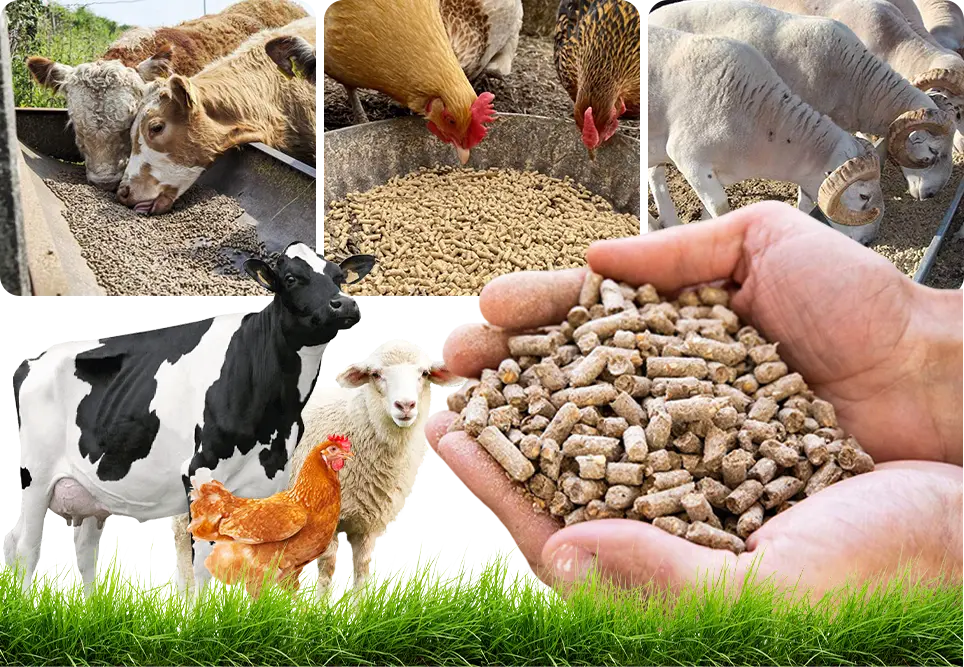
Understanding Animal Nutritional Needs
In animal nutrition, feed formulation focuses on determining daily nutritional needs, influenced by both maintenance and production requirements.
Maintenance needs (Nem) cover energy for basic functions like temperature regulation and metabolism. If only maintenance needs are met, the animal's weight and performance remain stable.
Production needs (NEp) are the extra energy for growth, lactation, egg production, reproduction, or physical activity. For example, a dairy cow's lactation energy needs are 2.5 times maintenance energy, while a laying hen's calcium needs during egg production are more than three times its growth phase.
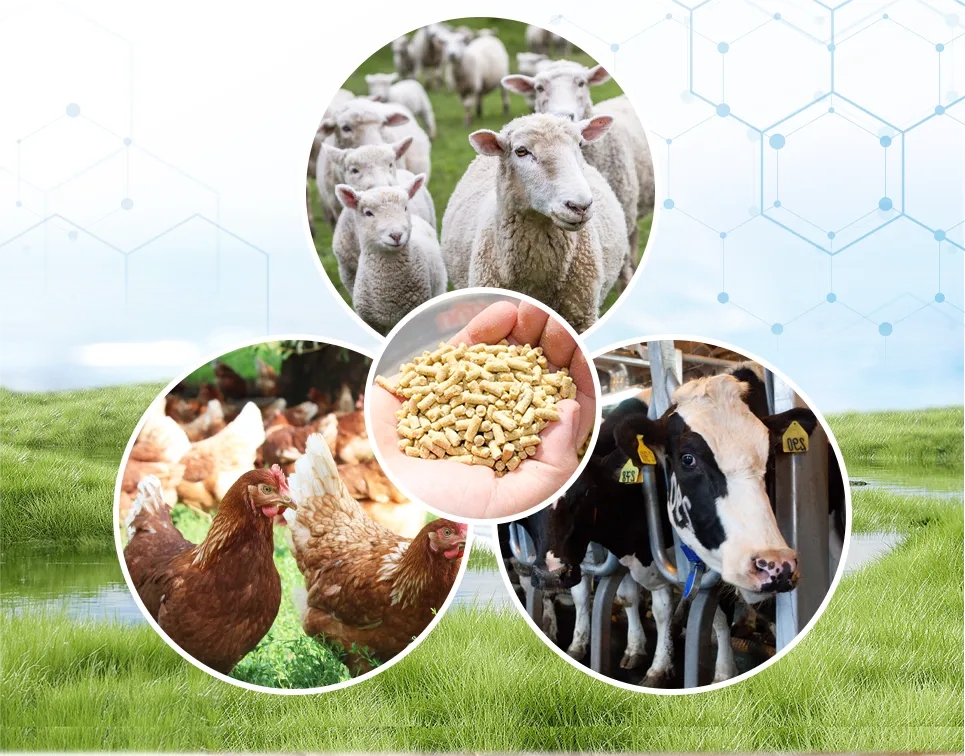
Main Sources of Nutritional Needs
Animal nutritional needs are divided into five categories: energy, protein (amino acids), minerals, vitamins, and water.
1. Energy
Mainly from carbohydrates and fats, providing fuel for life and production.
Monogastric animals rely on starch, while ruminants convert fiber to fatty acids for energy.
Energy shortages lead to weight loss and reproductive issues.
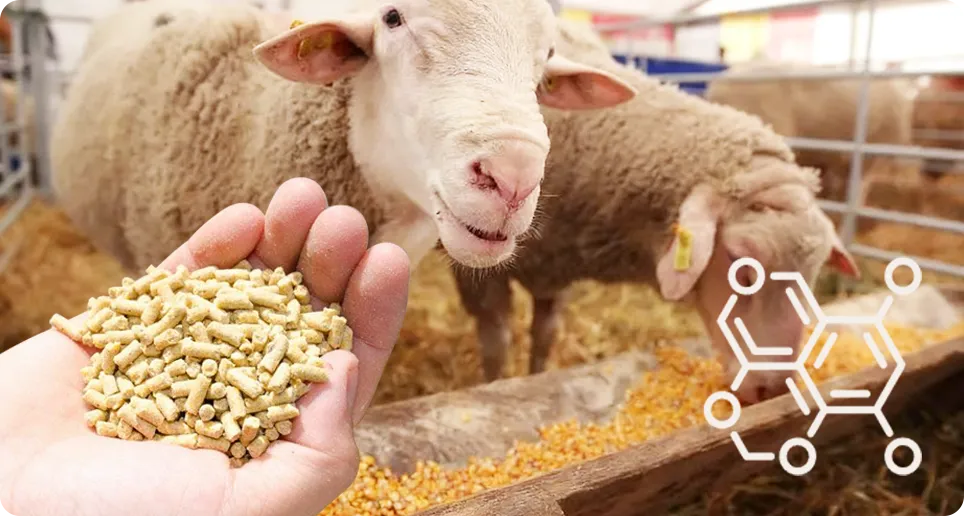
2. Protein and Amino Acids
Protein is crucial for muscles, organs, and milk.
Essential amino acids like lysine, methionine, and threonine must be balanced.
In ruminants, the balance of rumen-degradable and undegradable proteins is key.
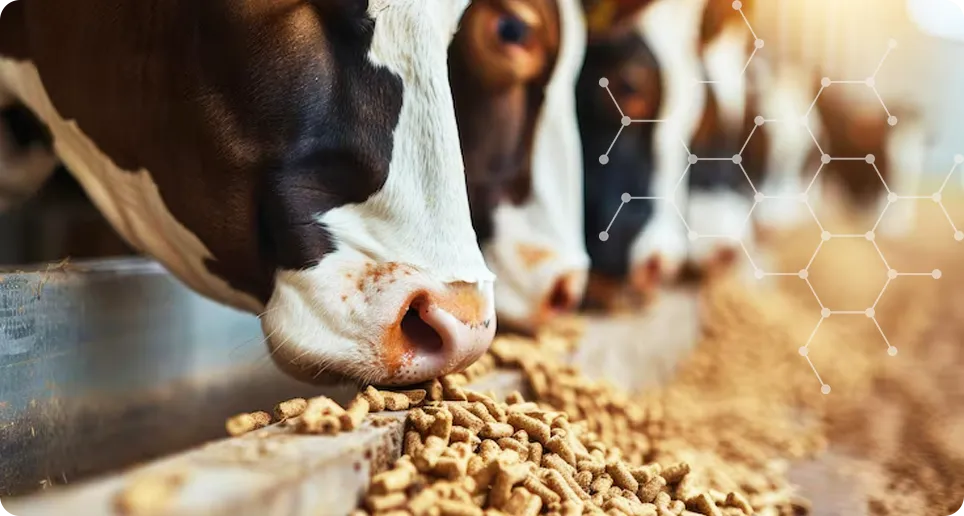
3. Minerals
Divided into macrominerals (Ca, P, Na, K, Mg) and trace elements (Fe, Zn, Cu, Mn, Se), minerals aid in bone formation, fluid balance, and enzyme activity. Imbalanced calcium-phosphorus ratios can cause bone issues.
4. Vitamins
Vitamins, though required in small amounts, support metabolism, immunity, and bone health. Deficiencies cause slow growth and weak immunity.
5. Water
Water makes up 60%-80% of an animal's body weight, aiding in digestion, nutrient transport, and temperature regulation. Poor water intake affects feed consumption and conversion.
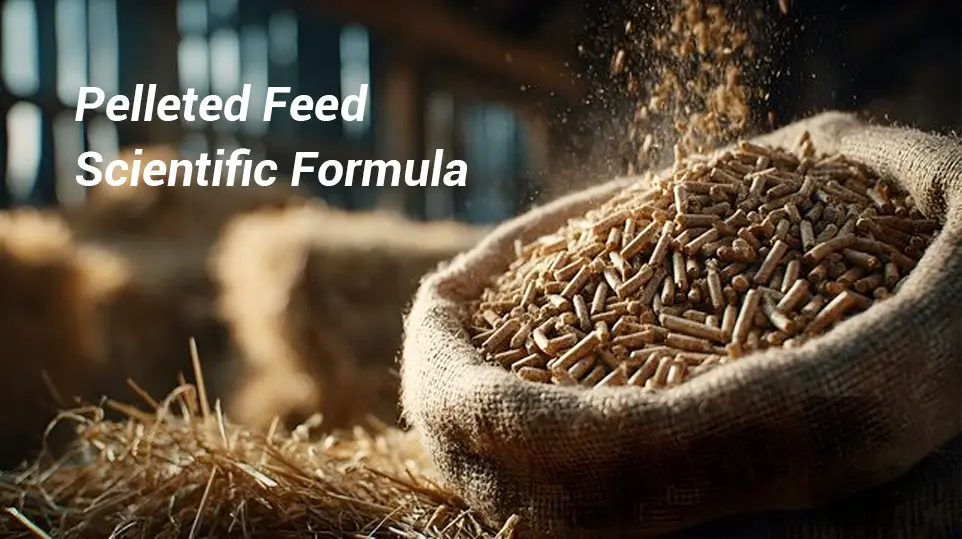
Nutritional Features of Feed Ingredients
Different feed materials vary greatly in chemical composition, energy density, protein level, and palatability.
1. Energy Feeds
Energy feeds contain less than 20% crude protein and 18% fiber, mainly providing energy for animals.
Energy is essential for maintaining body temperature, tissue growth, and production. Insufficient energy causes fat and protein loss, leading to slower growth and lower yield.
Common sources: corn, wheat, cassava, and bran.
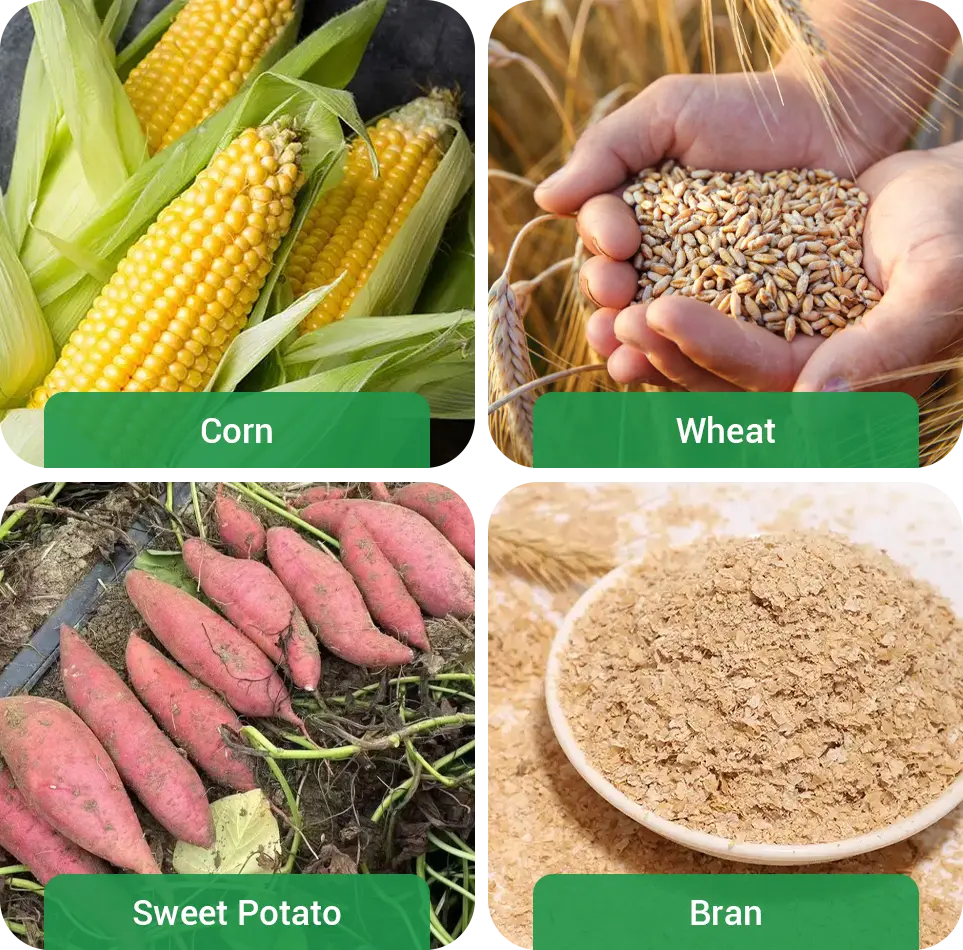
Corn offers the highest metabolizable energy (13–14 MJ/kg) and high digestibility but lacks lysine and calcium balance. It is best used with soybean meal or bone meal.
Wheat has slightly lower energy and higher protein, suitable for poultry feed.
Bran is rich in B vitamins and soluble fiber, supporting gut health though energy is lower.
Cassava and sweet potato meal are energy-rich but low in protein and should be mixed with protein sources.
Energy feeds usually take up the largest share in feed formulas, directly affecting feed cost and energy density.
2. Protein Feeds
Protein feeds (crude protein > 20%) provide amino acids for tissue growth, metabolism, and reproduction. They support muscle, hair, and milk protein formation while enhancing immunity.
They are divided into plant-based and animal-based types.
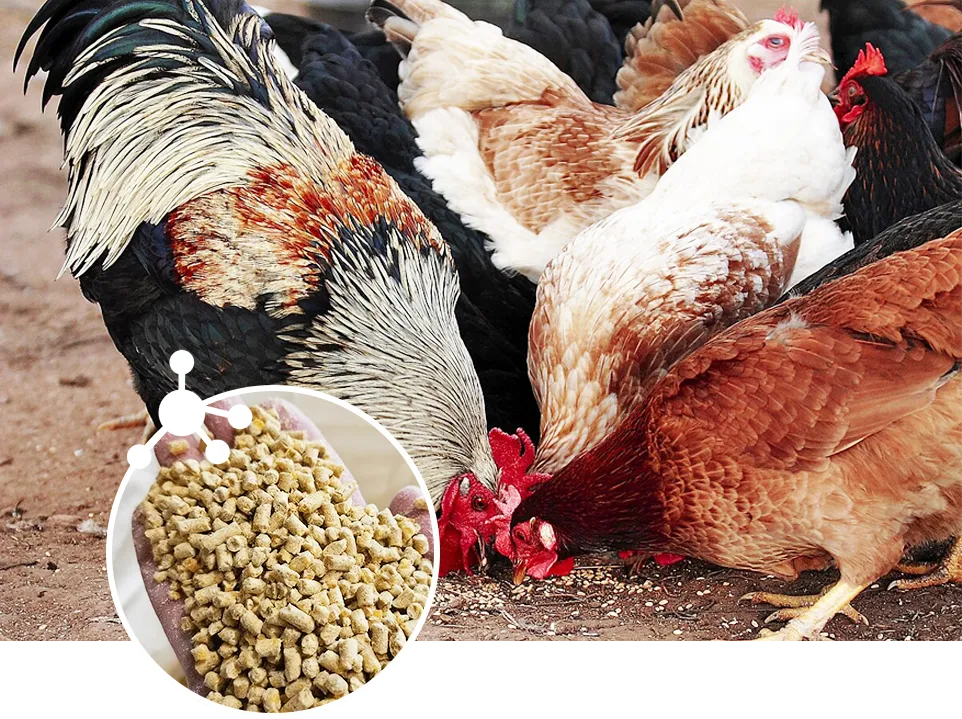
Plant Proteins
Main sources include soybean meal, rapeseed meal, peanut meal, and cottonseed meal.
Soybean meal (43%–48% protein) is rich in lysine and has a balanced amino acid profile. It must be heat-treated to remove antinutritional factors.
Rapeseed meal (35%–40% protein) contains sulfur amino acids, but excess erucic acid and glucosinolates may lower feed intake.
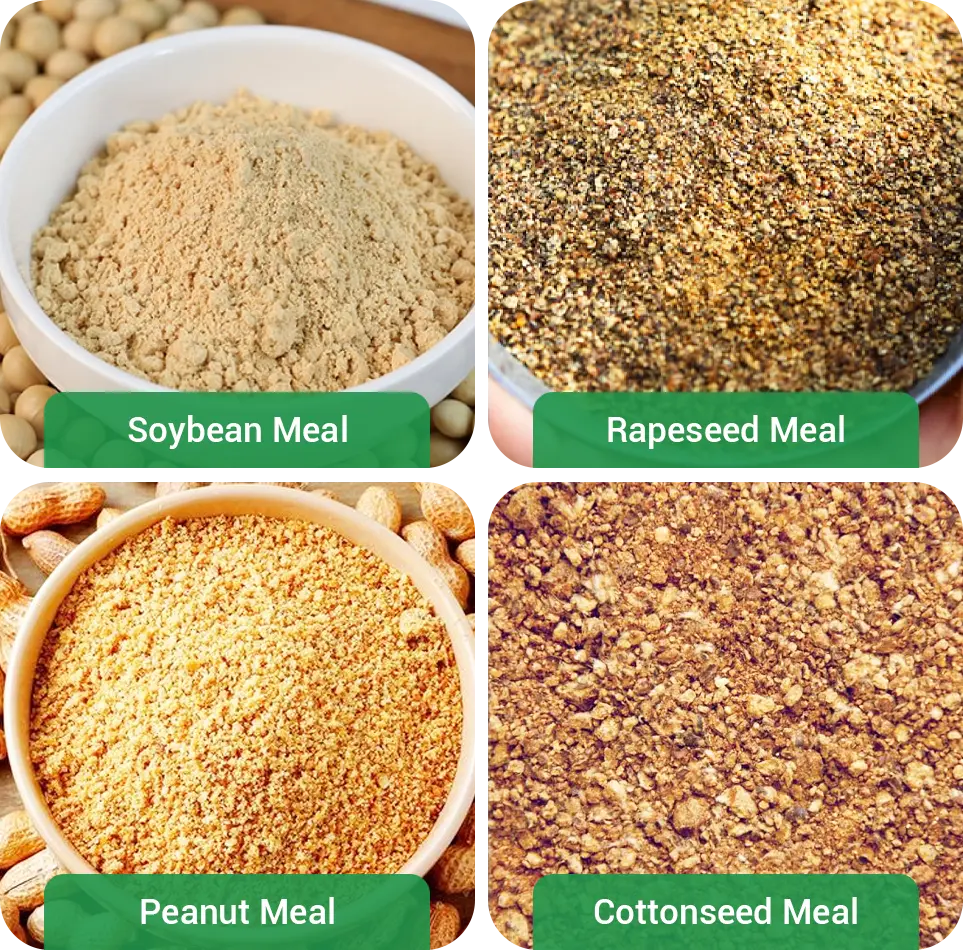
Animal Proteins
Common ones are fish meal, meat-bone meal, and blood meal.
Fish meal (over 60% protein) is high in minerals and vitamin B12, suitable for young or high-yield animals. Use should stay below 8% to avoid poor palatability(ACAF).
Protein feeds should be used with energy ingredients to balance amino acids. Lysine or methionine may be added if needed.

3. Roughages and Fiber Utilization
Roughages mainly include hay, straw, silage, and husks, with crude fiber usually above 18%. Their value lies not only in energy supply but also in maintaining digestive function and promoting metabolism.
For ruminants such as cattle and sheep, roughages form the main part of the diet. Microbes in the rumen break down cellulose into volatile fatty acids such as acetic, propionic, and butyric acids, which supply about 50%–70% of total energy (NRC, 2016).
Rumen fermentation also produces microbial protein that provides nitrogen for the animal.
Monogastric animals like pigs and poultry cannot digest fiber efficiently due to the lack of cellulase. Excess fiber lowers energy density and digestibility.
Still, a moderate level (around 4%–6%) helps stimulate gut movement and maintain a healthy intestinal microflora, especially in sows and young pigs.
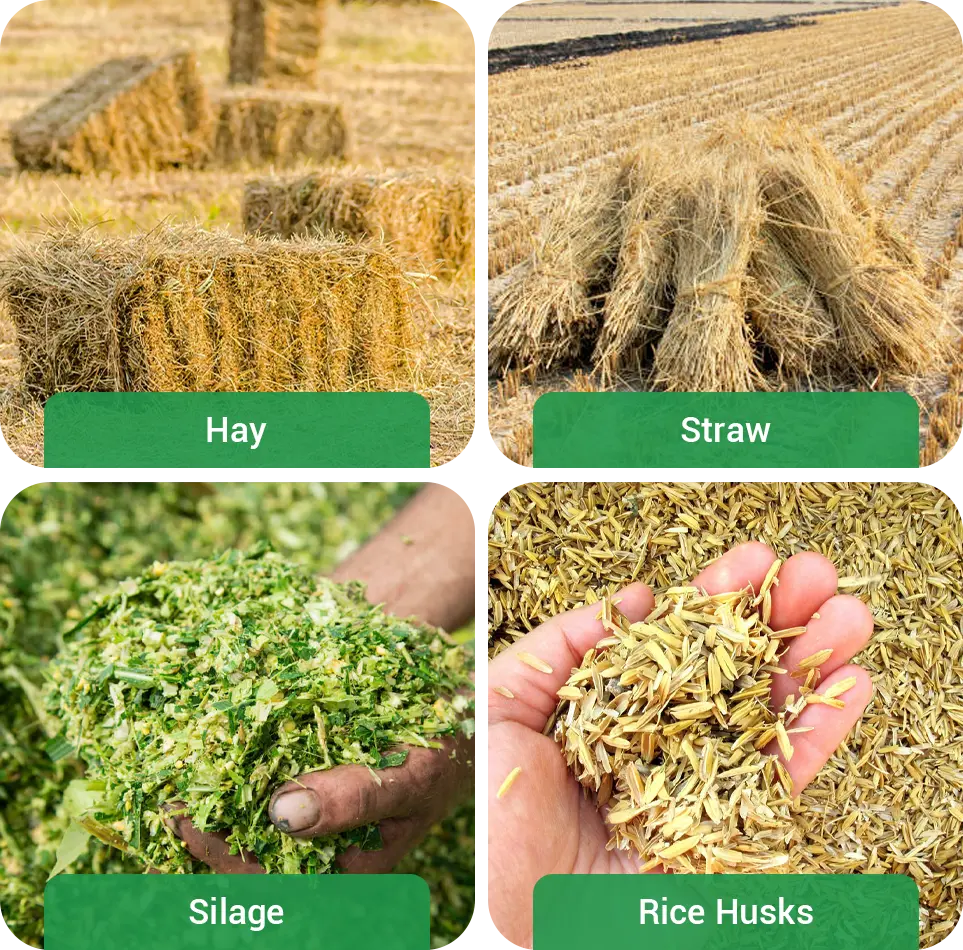
4. Mineral and Vitamin Feeds
Although added in small amounts, minerals and vitamins are essential for metabolism, reproduction, and immunity.
Calcium and Phosphorus Balance
Calcium and phosphorus are key elements for bone and eggshell formation. Imbalance may slow growth or cause rickets and reduced egg production.
For laying hens, calcium is usually 3.0%–3.5%, available phosphorus about 0.25%, and the Ca:P ratio around 13:1.
Lactating cows need extra phosphorus to prevent hypocalcemia.

Role of Trace Elements
Zinc, manganese, copper, iron, and selenium are components of many enzymes involved in oxidation, immunity, and reproduction.
Zinc supports hoof and skin health. Copper and iron aid hemoglobin synthesis. Selenium works with vitamin E to prevent muscle degeneration and enhance antioxidant capacity.
Function of Vitamins
- Vitamin A supports epithelial health and immunity.
- Vitamin D3 improves calcium and phosphorus absorption.
- Vitamin E enhances fertility and antioxidant defense.
- Vitamin C helps animals cope with heat and stress.
Durin heat stress or disease recovery, vitamin levels can be slightly increased to reduce stress.
In production, minerals and vitamins are usually added as premixes to ensure even mixing and accurate dosage.

Feed Processing Methods
Feed processing affects how well animals digest and use nutrients. The form of materials, processing methods, and temperature all influence nutrient absorption.
Physical Processing
This basic method changes feed size and texture through chopping, shredding, and grinding. It softens coarse materials and improves palatability.
Proper grinding increases contact with digestive fluids, enhancing digestibility. Over-grinding, however, can reduce feed intake or harm rumen function.
After grinding, materials are steamed and pelleted. Heat helps gelatinize starch and denature protein, improving digestion. The pellets are then dried and cooled for easy feeding and storage.
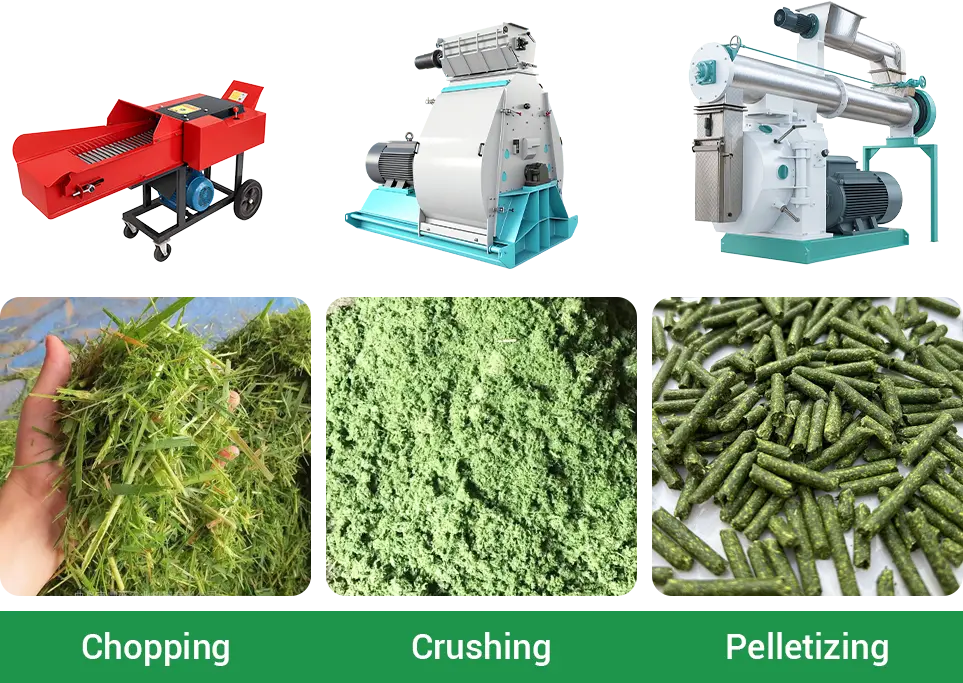
Chemical and Biological Processing
For fibrous materials like straw or husks, grinding alone is not enough.
Chemical treatment (alkali or ammoniation) breaks lignin bonds, loosens fiber, and adds non-protein nitrogen for rumen microbes.
Biological treatment uses fermentation with lactic acid bacteria or yeast to create smaller, more digestible compounds and inhibit harmful microbes.
Fermented feed improves protein use, gut health, and stress resistance - a practical, low-cost choice for small and medium farms.
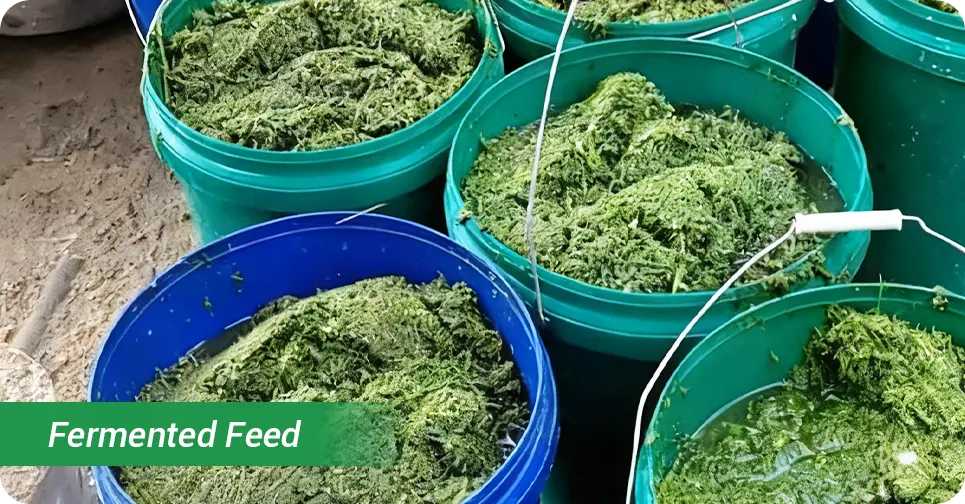
Feed Processing Methods and Applications
| Processing Method | Main Applicable Animals |
| Chopping / Shredding | Ruminants (Cattle, Sheep) |
| Grinding | Pigs, Poultry (Chickens, Ducks), Young Ruminants |
| Conditioning / Pelleting | Pigs, Poultry, Cattle, Sheep, Horses, Deer |
| Extrusion | Aquatic Animals, Pets (Cats, Dogs) |
| Fermentation | Pigs, Cattle, Poultry |
| Alkali / Ammonia Treatment | Ruminants (Cattle, Sheep) |
We offer high-quality, easy-to-use, and cost-effective feed processing equipment.
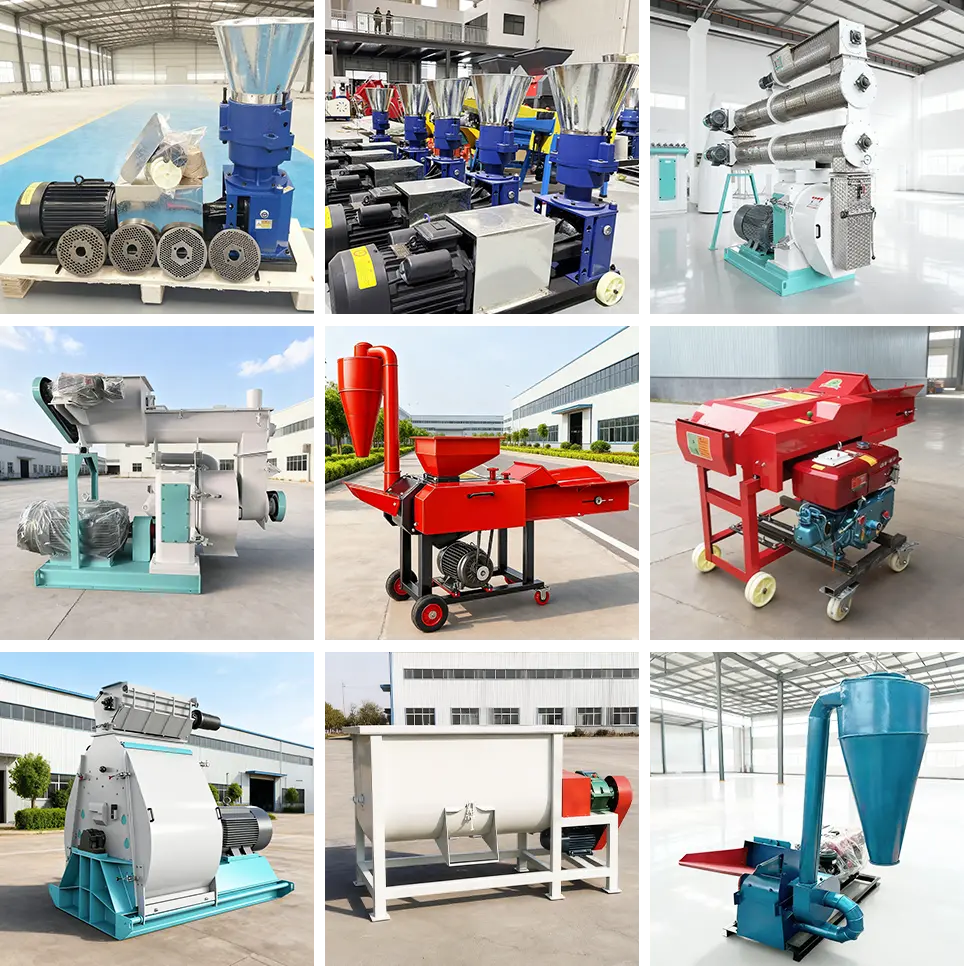
Matching Feed to Animal Needs
Animal nutritional requirements depend on two key factors: species differences and physiological stages. Even within the same species, nutritional needs change during growth, reproduction, or production.
By Animal Species
Poultry Nutrition (Chickens, Ducks, Geese)
Poultry are monogastric animals with a short digestive tract and fast digestion, making them sensitive to feed particle size and energy density. Their diet should focus on high-energy, low-fiber ingredients like corn, wheat, and vegetable oils.
Poultry need methionine and lysine supplements to improve protein synthesis and egg production. For laying hens, a Ca:P ratio of 3.5–4.5:1 is ideal for eggshell formation and bone health. Broilers require higher energy for growth and muscle development.
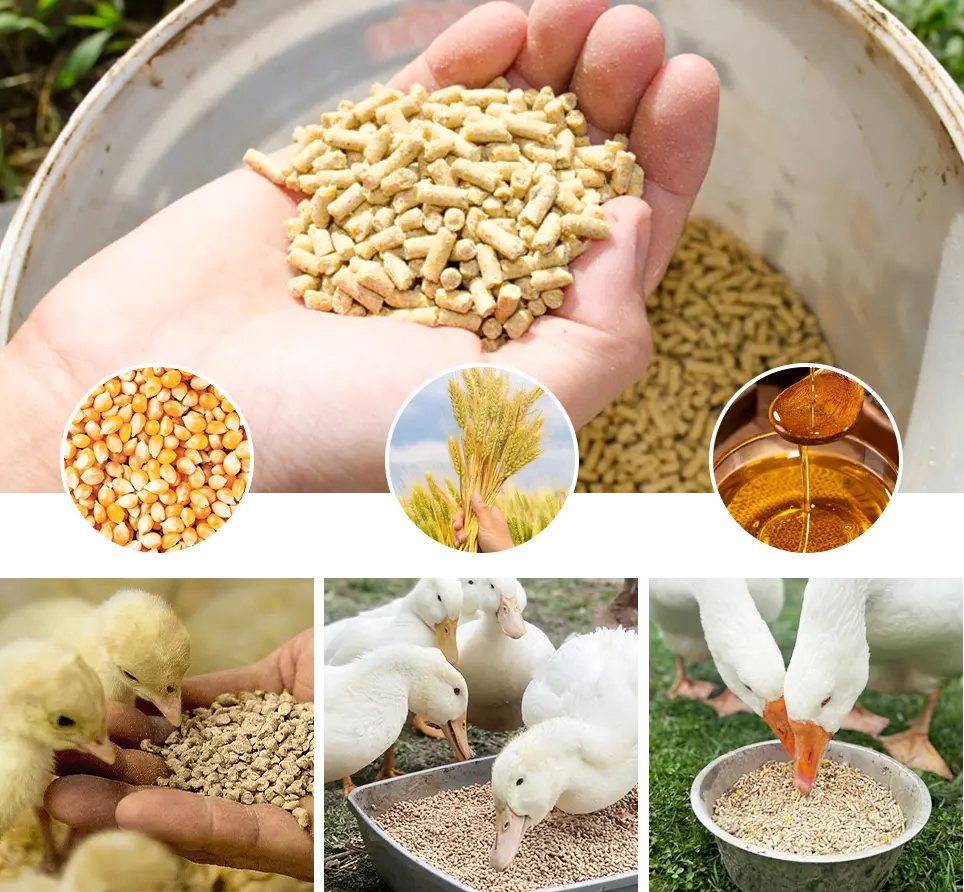
For specific feed recipes for broilers and laying hens, visit our Feed Formulation Reference for Different Animals.
Ruminant Feed (Cattle, Sheep)
Ruminants depend on rumen microbes to break down fiber into volatile fatty acids for energy. Their diet should mainly consist of roughage, with added concentrates to boost energy.
Ruminants can utilize both feed and microbial protein. Non-protein nitrogen sources like urea can be used in moderation, paired with fermentable carbohydrates and minerals to support microbial growth.
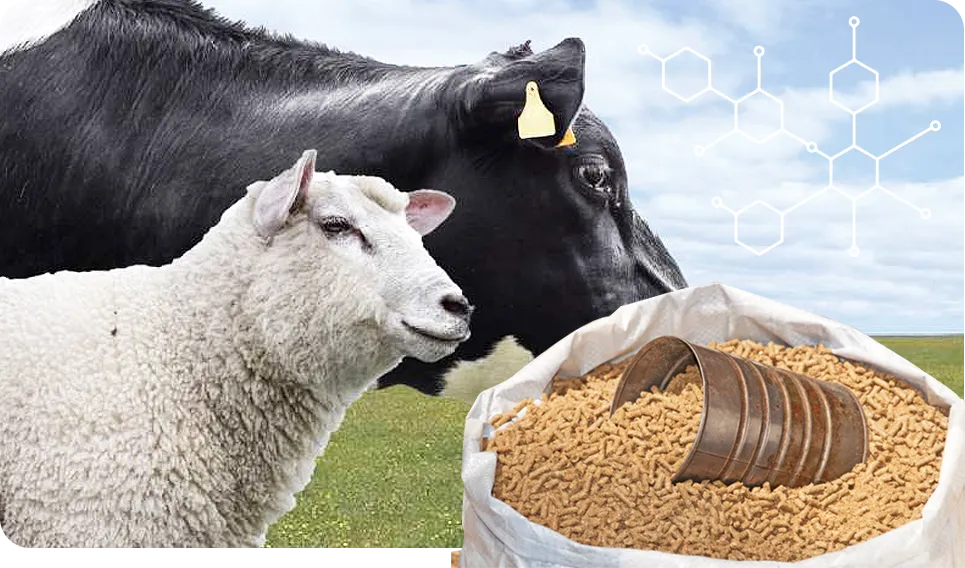
Pig Diet
Pigs are monogastric animals with longer digestive tracts, enabling them to digest starch and some soluble fiber. Their feed should balance energy from corn and protein from soybean meal to meet both energy and protein needs.
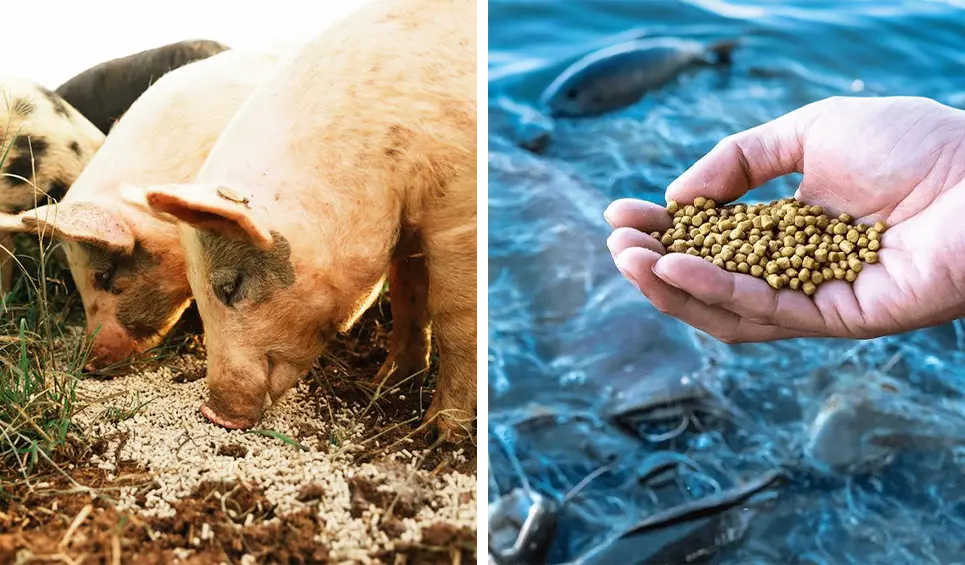
Aquatic Animal Feed (Fish, Shrimp)
Aquatic animals rely on protein and fat for energy. Their feed should be high in protein, high in energy, and easily digestible. Common ingredients include fish meal, soybean meal, and fish oil.
Maintaining an amino acid balance, especially lysine, methionine, and threonine, is crucial. Supplementing with vitamins C and E helps boost stress resistance and improve overall health.
By Physiological Stages
Animal species shape feed structure, but nutritional needs change as animals grow, with priorities shifting at each stage.
| Stage | Key Actions |
| Chick | High-protein feed with iron, vitamins A & E for immunity. |
| Growth | Focus on protein, calcium, and phosphorus for growth. |
| Finishing | Control energy intake, ensure adequate protein. |
| Breeding | Increase energy, add vitamin E, zinc, selenium. |
| Pregnancy | Adjust energy and protein, add folic acid, calcium, iron. |
| Lactation / Laying | Boost energy & protein; add calcium for hens, phosphorus for lactating animals. |

Feed Formulation & Calculation
Feed formulation should balance science, cost, and palatability. It follows five key steps.
Formulation Design Steps
- Define animal type, stage, weight, and nutrient needs.
- Select ingredients based on nutrition, digestibility, and cost.
- Check metabolizable energy, protein, calcium, phosphorus, and amino acids.
- Adjust ingredient ratios for energy and protein balance.
- Evaluate performance and adjust the formula as needed.
Formulation Calculation Methods
1. Pearson Square Method
A simple manual method, suitable for balancing one nutrient (like crude protein or energy) with two ingredients.
Recommended tool: Pearson Square Calculator (with instructions).
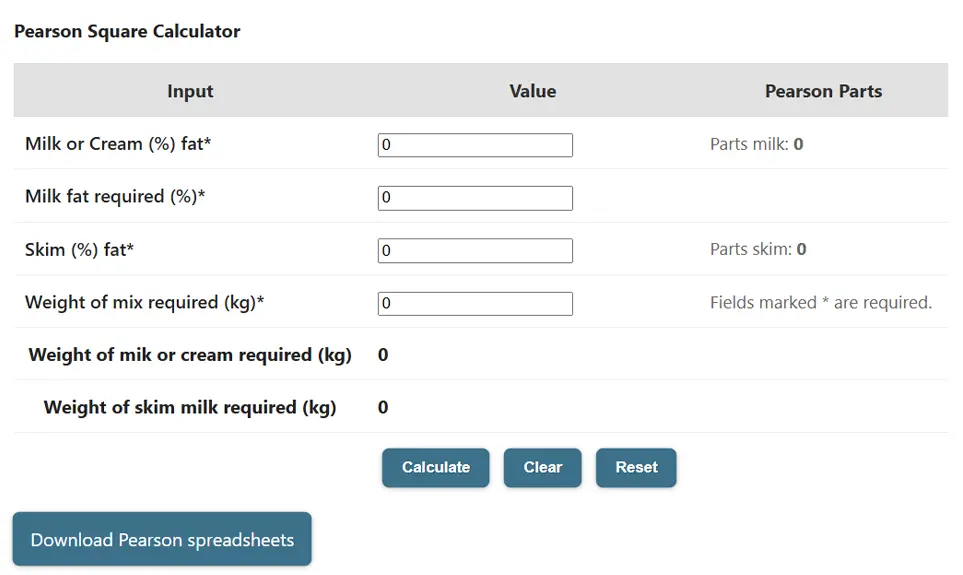
2. Trial and Error Method
Start with an estimated ratio based on experience, then make gradual adjustments. This simple method is ideal for small-scale production.
If the nutrient levels don't meet the target, tweak the ingredients and repeat until the desired balance is reached.
3. Simultaneous Equation Method
Uses algebra to solve ingredient ratios, suitable for multi-nutrient calculations with two or more ingredients.
Example: For growing pigs, balance energy and protein with these target levels:
- ME: 13.0 MJ/kg, CP: 18%
Ingredients
Corn: ME = 13.4 MJ/kg, CP = 9%
Soybean meal: ME = 12.1 MJ/kg,CP = 46%

Solution: 70% corn, 30% soybean meal.
Recommended tool: Equation Solver.
Scientific feed formulation requires understanding animal needs and practical experience. Continuous improvement in ingredient mix and processing is key to better feed quality and efficiency.
For more information or expert advice, feel free to reach out.

 Online Contact
Online Contact Send Message
Send Message
Need Some Help?
Contact us quickly and we will reply you within 24 hours. We will not disclose your information.